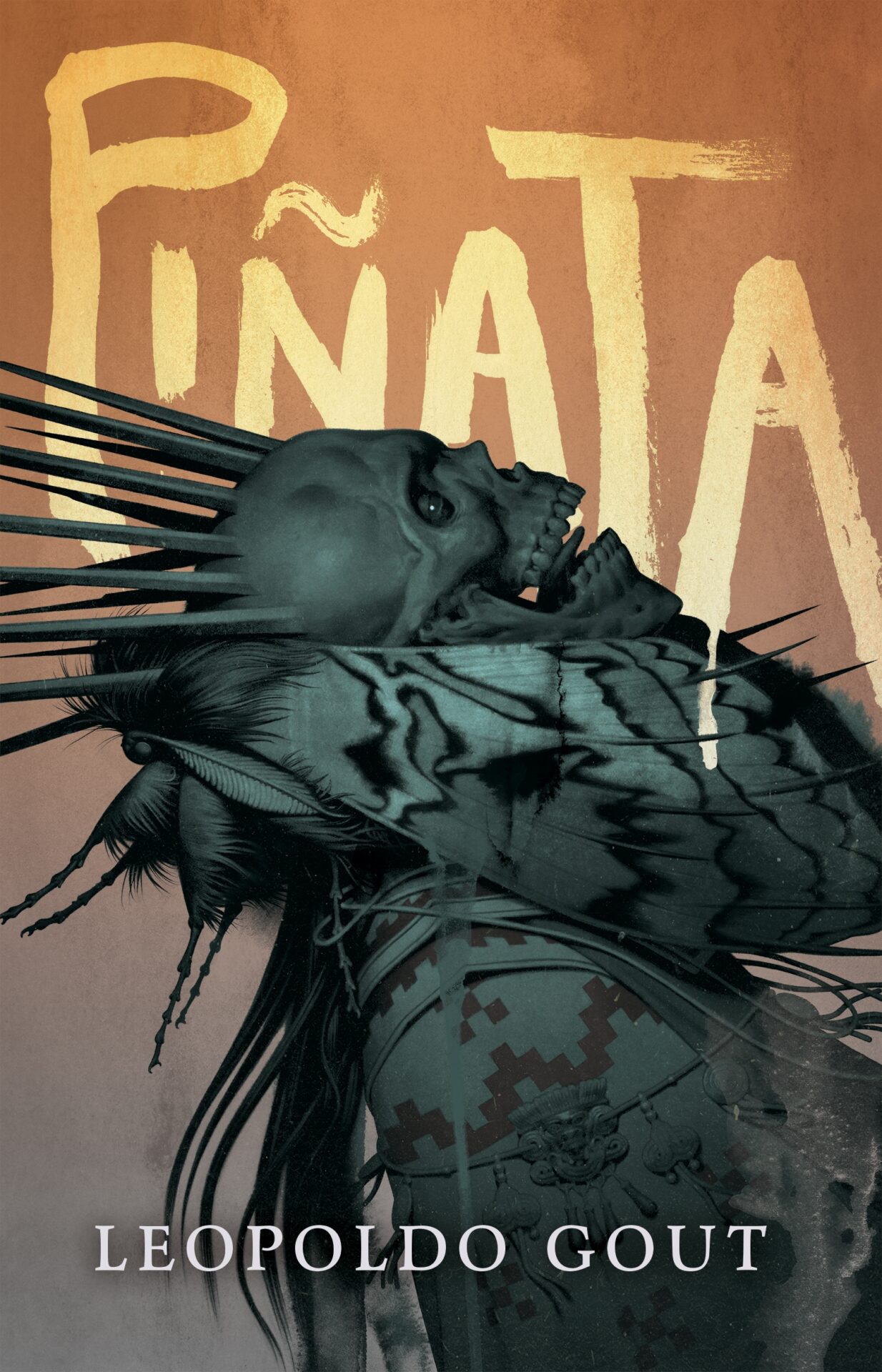
Leopoldo Gout is joining us today to talk about his novel, Pinata. Here’s the publisher’s description:
Mexican American architect and single mother Carmen Sánchez hopes a business trip to Mexico to oversee the transformation of an old cathedral into a posh hotel will be an opportunity for her daughters, Izel and Luna, to learn about their roots. Then an accident at the construction site reveals a hidden cache of pre-Hispanic artifacts behind one of the church walls and costs Carmen her position. Before the family flies back to New York, Luna sneaks onto the work site and steals a piñata, a clay pot used to hold offerings, from the cache of artifacts—with devastating consequences. Once home, Carmen begins to have unsettling dreams and visions of hideous corpses and the deaths of those around her pile up. The forgotten gods of the conquered Nahua peoples of Mexico seek revenge for colonial wounds. Their power, their might, their memory has been forgotten and they will make the world remember why they were once respected, feared, and loved. Carmen must set aside her skepticism about the supernatural to save her family—and the world—from disaster.
What’s Leopoldo’s favorite bit?

Leopoldo Gout
My favorite part of my book is the start of it.
The cold open prologue.
It begins with a general atmospheric description of Mexico shortly after the fall of the Aztec capitol of Tenochtitlan. The empire has fallen, villages are being raided by conquistadores and their allies, illness is rampant, and God has arrived in the land of the Indigenous Nahua. It focuses in on the children taken by the missionaries being forced to break the artifacts of their people.
I have been exploring my connections to the original people of Mexico since I was a kid.
My late mother, Andrea Valeria, used to host Indigenous pilgrims in our home and foster deep connections and friendships with them. One of the greatest and most fascinating differences between our cultures that I gleaned from those days was the attribution of value. We might appraise the value of a mask by the intricacy of its design, how much labor it would have taken, the vibrance and skillful application of paint, or the simple beauty of them. They, however attributed value to each mask only by how “danced” they were, quite literally how much one had been worn during the act of dancing determined its value. It was a value determined by the amount of energy which had been poured into an object after its creation, how much life the empty eyes of the mask had seen.
Years later, I discovered that in my father’s side of the family we actually had some Zapotec ancestry, descendant from a long-ago Zapotec woman. I’ve always been fascinated by Indigenous culture in Mexico and seeing as it was this curiosity and connection I had to this part of my family and my country which led me to write Piñata.
It was my research into Indigenous culture which birthed the image of the cold open and then the novel itself. I found that Catholic frays introduced piñatas to Mexico. The Aztecs had something mildly similar, but they had different purposes which is explained in the book. But, what these Spanish friars would do is paint them with images of Indigenous gods, what they deemed idolatry, and fill them with food. Then the children, taken from their culture and hungry, would be forced to destroy the image of their gods if they were to get the food within. The image and idea were so extraordinarily horrific I didn’t sleep for days thinking about it. I wrote the beginning story right away and felt transported, like I had been a witness to such horror.
I use all my senses in my work, both as visual artist and writer, and my scent and sensory memory really drive the cathartic horror in Piñata as it focuses so heavily on the memory of the Indigenous people of Mexico, both past and present. I sought to express the rage inherent in that tortured history. It only made sense that its story began with them, the violence that befell them and began the story of modern Mexico, and with the rage for which vengeance is sought in the novel. I wanted to explore the pure terror of losing our memory of the past and our culture or language. Because from the cave art till now, we are who we are thanks to our memory. So how crazy it is when Mexico today is a country that has a 500-year barrage against its memory.
Piñata is a story about a deep fear and anger at having one’s culture, language, home, family, art, and history taken. I wanted to explore that horror from the first pages as it is the context that the novel takes place, as much as it is the context of Indigenous history in Mexico. I really attempted to do so as if I was painting in my studio with all my senses traveling from historic and macro to the heart of a modern Latina living today.
LINKS:
BIO:
Leopoldo Gout was co-president of the James Patterson Entertainment company for many years; he is currently producing award-winning author Marlon James’ original debut for television: GET MILLIE BLACK (Channel 4 & HBO). He and his brother, award-winning writer-director Everardo Gout (Netflix’s Kaleidoscope) are show-runners of AMERICAN JESUS, a Netflix / Mark Millar series. Leopoldo along with Radical Media won the Critics’ Choice Award for FILTHY RICH (Netflix), a documentary series on Netflix. He is the creator and writer of NO MAN’S LAND (Starz), and SPYMASTERS (Madison Welles Media). Gout is also developing a Pulitzer Prize finalist book IN THE DISTANCE into a film with the Larrain Brothers and he was the originating producer on the Oscar-nominated, MOLLY’S GAME, a project that he worked from book to screen. Other producer credits include INSTINCT (CBS), ZOO (CBS), MIDDLE SCHOOL: The Worst Years of My (Participant Media and LIONSGATE) and Everardo Gout’s directorial debut DAYS OF GRACE which debuted at the Cannes Film Festival and won over 20 awards internationally. He has a thriving art studio and lives in NYC with his wife and two kids: a cat called Lola and a dog called Lupe.
